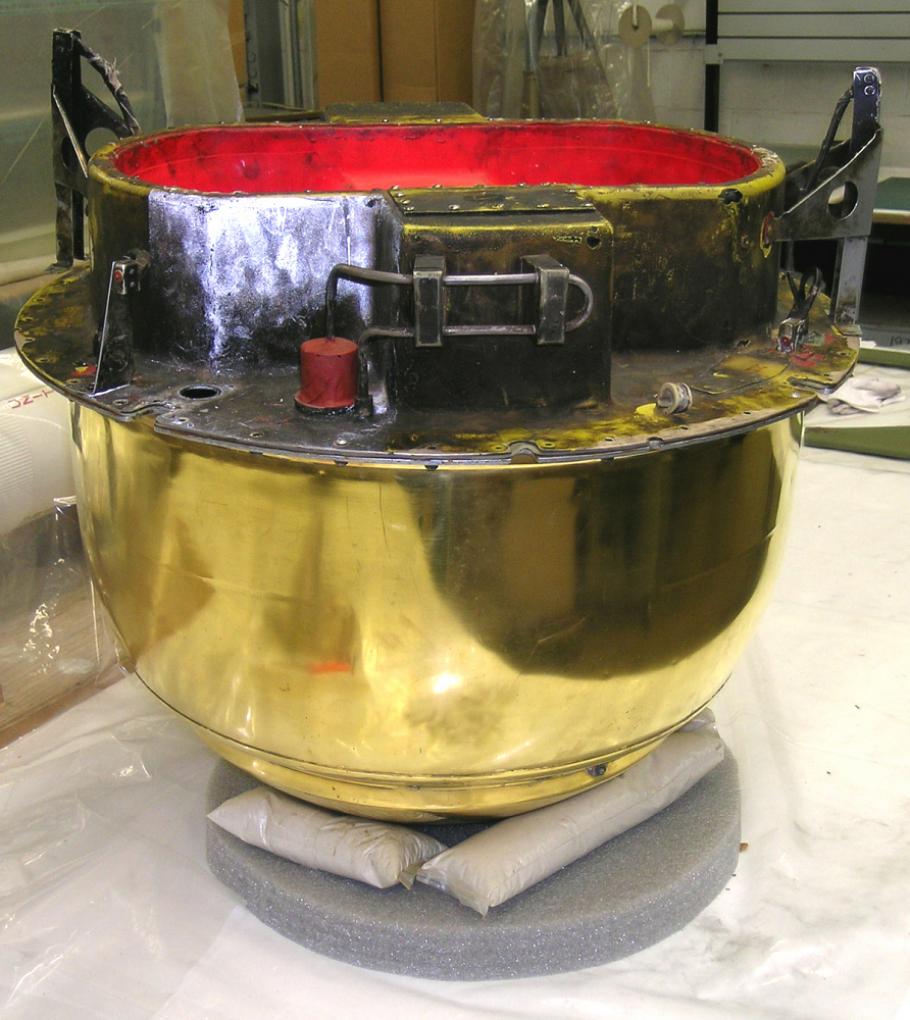This is the Discoverer XIII reentry capsule which, along with the capsule cover and parachute, was recovered north of Hawaii by the U.S. Navy on August 11, 1960, the first man-made object to be recovered from orbit. The Discoverer XIII satellite had been launched the previous day from Vandenberg AFB. "Discoverer" was the cover name for the highly classified U.S. Air Force/Central Intelligence Agency Corona photoreconnaissance satellite program. The Discoverer XIII satellite did not carry cameras or film, and the capsule contained only diagnostic instruments. Corona satellites, however, carried cameras and film beginning with Discoverer XIV one week later. By the end of the Corona program in May 1972, over 120 Corona satellites had successfully flown and photographed the Soviet Union, China, and other nations. The capsule was made by General Electric and donated by the U.S. Air Force to NASM in 1960.
Display Status
This object is not on display at the National Air and Space Museum. It is either on loan or in storage.
Object Details
Key Accomplishment(s)
First Man-made Object Recovered from Orbit
Brief Description
This capsule was recovered from orbit after reentry into the Earth's atmosphere on August 11, 1960. Its success inaugurated a top-secret program of reconnaissance from space, giving the U.S. key information about the Soviet Union's military capabilities during the Cold War.
Country of Origin
United States of America
Type
SPACECRAFT-Uncrewed-Test Vehicles
Manufacturer
General Electric Company
Dimensions
Other: 73.7 × 47cm, 136.1kg (2 ft. 5 in. × 1 ft. 6 1/2 in., 300lb.)
Materials
Capsule is aluminum (w/gold plating); instrumentation inside capsule is magnesium and other metals; wiring inside capsule is metal and plastic
Alternate Name
Discoverer 13
Inventory Number
A19610100000
Credit Line
Transferred from the United States Air Force
Data Source
National Air and Space Museum
Restrictions & Rights
Usage conditions apply
For more information, visit the Smithsonians Terms of Use.





